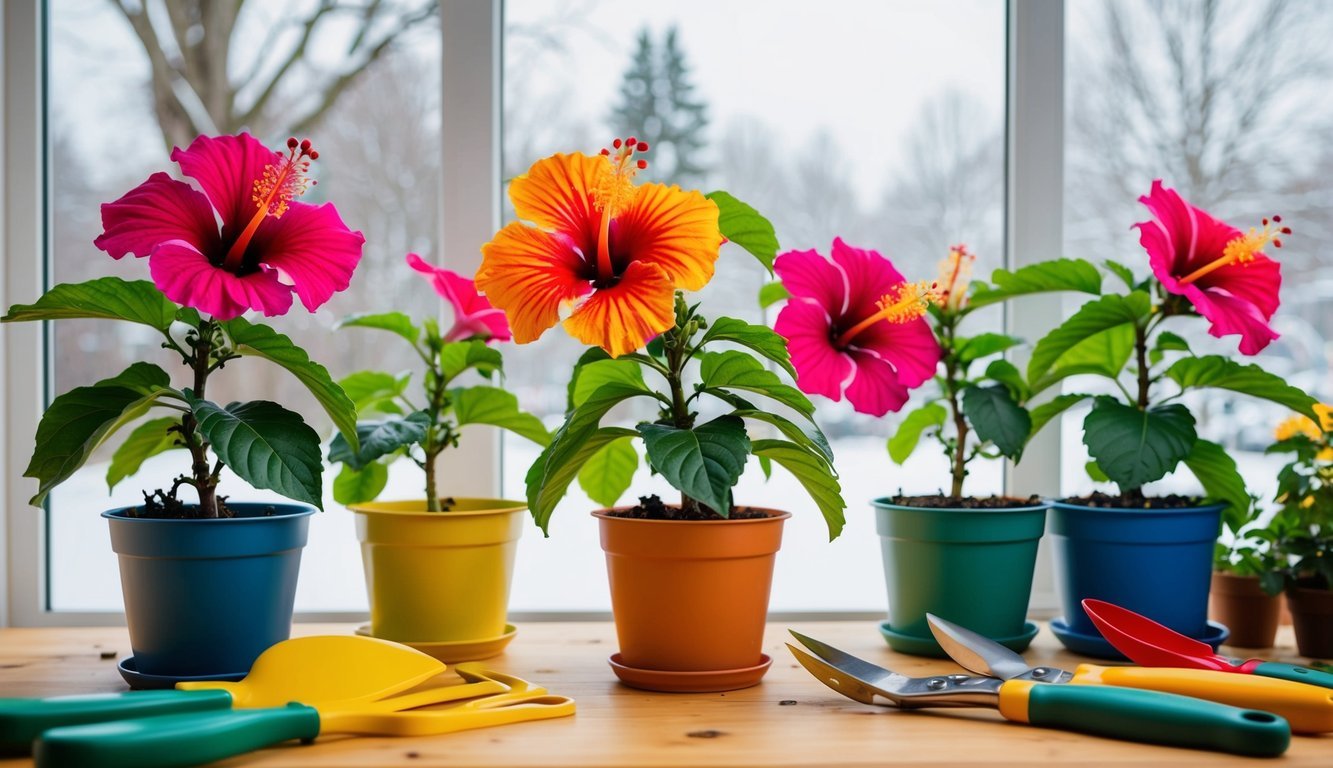
Incorporating hibiscus plants into your garden can truly elevate its aesthetic appeal.
However, if you’re situated in a region with cooler winters, you’ll need to take specific steps to ensure these lovely perennials survive the frigid months.
Here’s a handy guide on how to effectively winter your hibiscus, put together with insights from plant expert Matt Dursum.
Understanding Hibiscus Varieties
Hibiscus plants are beloved for their striking tropical look and eye-catching flowers.
They fall into two main types: tropical hibiscus and cold-hardy hibiscus.
The tropical varieties are known for their brilliant blooms, appearing year-round, while their cold-hardy counterparts shed their leaves as winter approaches.
If you live in Hardiness Zones 5-9, you can cultivate cold-hardy varieties like the Texas Star Hibiscus without much hassle.
These resilient plants will naturally go dormant in winter, requiring little care.
But, if you aim to enjoy the beautiful flowers of tropical types like roselle hibiscus or lion’s tail hibiscus, taking the right winterizing steps is essential.
Key Winterizing Steps
- Sanitize Your Tools: Start by cleaning and sterilizing your pruning tools.
This essential practice prevents pests, fungi, and diseases from spreading to your plants.
- Prune Before the Chill: Execute your pruning before temperatures dip below 50°F (10°C).
Preparing your tropical shrubs this way sets them up for a successful winter.
- Inspect for Pests and Diseases: After pruning, take a close look at your plants.
Look for any signs of pests or diseases that may threaten other plants in your garden.
- Address Infestations: If you discover any unwanted visitors, use a hose to wash off the foliage.
This step helps to remove insects and keeps your plants healthy.
- Moderate Fertilizer Use: Before winter, give your hibiscus a final feed rich in potassium and nitrogen.
These nutrients are particularly beneficial as the plants prepare for their spring and summer growth spurt.
- Move Indoors: Transfer your hibiscus to a cozy indoor spot that receives bright or indirect light.
This transition is vital to help them withstand the colder months.
- Water Wisely: Inside, maintain a consistent watering schedule.
Your goal is to keep the soil moist, but avoid over-saturating it.
- Monitor Regularly: Check in on your plants frequently throughout the winter.
Regular maintenance will ensure that they remain in good health while indoors.
- Transition for Spring: As temperatures climb above 50°F (10°C), move your hibiscus to a shaded area outside.
When the signs of spring become apparent, it’s time to gently wake your plants from their winter slumber.
Ensuring Thriving Hibiscus
Winterizing hibiscus represents a smart approach for gardeners wanting to preserve their tropical plants as perennials.
By following these straightforward guidelines, you can ensure that your hibiscus not only survives winter but also flourishes in the warmer months.
Embrace the satisfaction of witnessing a stunning burst of blooms year after year as you continue this winterizing ritual.
Source: Epicgardening.com

